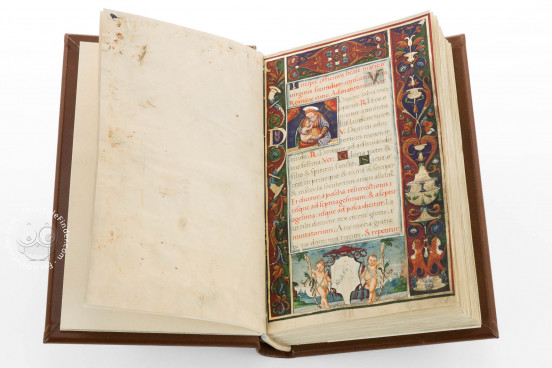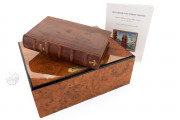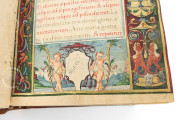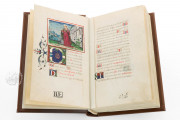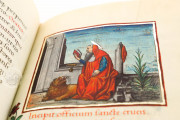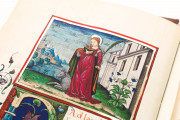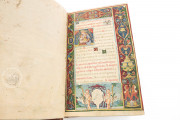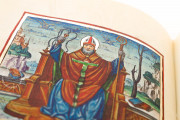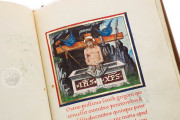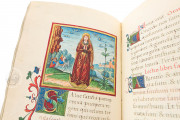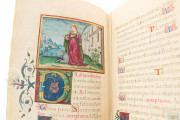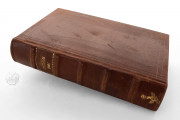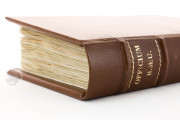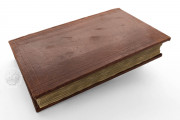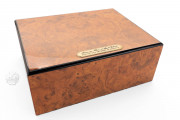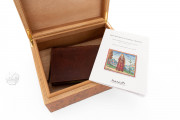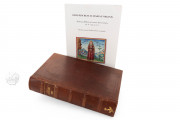The Hours of Anna Sforza is one of the most remarkable examples of book painting from Lombardy, Northern Italy. The codex, also known as Offiziolo di Anna Sforza, was written and illuminated in the second half of the fifteenth century and features an extensive iconographic apparatus which includes several full-page miniatures, eleven historiated or decorated initials, and 197 letters painted in silver.
The Lombard Art of the Hours of Anna Sforza
In the last couple of centuries, scholars have debated on the identity of the artist who took on the iconographic apparatus of the Hours of Anna Sforza, leading to suggest the name of Francesco Binasco, an artist active in Milan at the Sforza's court between the end of the fifteenth and the beginning of the sixteenth century.
Regardless of the artist's identity, the iconographic apparatus certainly betrays a talented and skilled hand trained in the Lombard art. Some features typical of this art are the realistic representation of figures, wavy hair, tapered fingers, flowing beards, and backdrops characterized by fertile valleys embellished with flowers, plants, and rivers.
Francesco Binasco: a Synthesis of Trecento and Quattrocento Artistic Style
The vivid miniatures – combining features of the Trecento and the Quattrocento in a harmonious manner – echo the style of Bernardino Zenale and the attention to perspective and architecture, which betray Leonardo and Bramante's influence (all belonging to the fourteenth century).
The iconography of the Hours of Anna Sforza also betrays a Trecento influence, echoing the Flemish rendition of late-gothic steeples and in the stereotypical depiction of smiling faces.
Uncertainty of Commissioner and Recipient
The recipient of such an outstanding manuscript appears to have been a woman as a result of the attention and accuracy in the depiction of long and wavy hair with which several saints were represented. As the codex was made in Lombardy, but it came down to us as part of the collection of the Este library, the manuscript could have been made in occasion of Anna Sforza's marriage with Alfonso d'Este.
Indeed, other Lombard manuscripts – such as De Sphaera and the Missal of Anna Sforza – were found in the same collection, and it has been suggested that it was a result of the union of the two families, perhaps as wedding gifts or as a dowry on behalf of the Sforza family.
However, there is evidence which would not support this claim, for the manuscript still bears the symbol of a cardinal's hat, leading scholars to believe that the commissioner could have been Ippolito d'Este who became cardinal of Milan in 1497, the year in which Anna Sforza dies and therefore could not have been a wedding gift. Both theories however can only remain speculative as we wait for new evidence.
A Beautiful Example of Humanistic Script
The Hours of Anna Sforza displays a remarkable example of the fifteenth century humanistic script, formally known as littera humanistica rotunda, which in an attempt to restore clarity after the Gothic script features less abbreviations. Some additional features are ligatures and the use of the long s whose descender does not extend below the baseline.
Binding description
Binding
Unfortunately, the manuscript no longer bears its original binding, which appears to have been replaced with a late eighteenth-century red leather binding featuring a dry etched coat of arms of the Este family, and the title written in gold on the spine.
We have 1 facsimile edition of the manuscript "Hours of Anna Sforza": Officium Beatae Mariae Virginis di Anna Sforza facsimile edition, published by Imago, 2019
Request Info / Price
